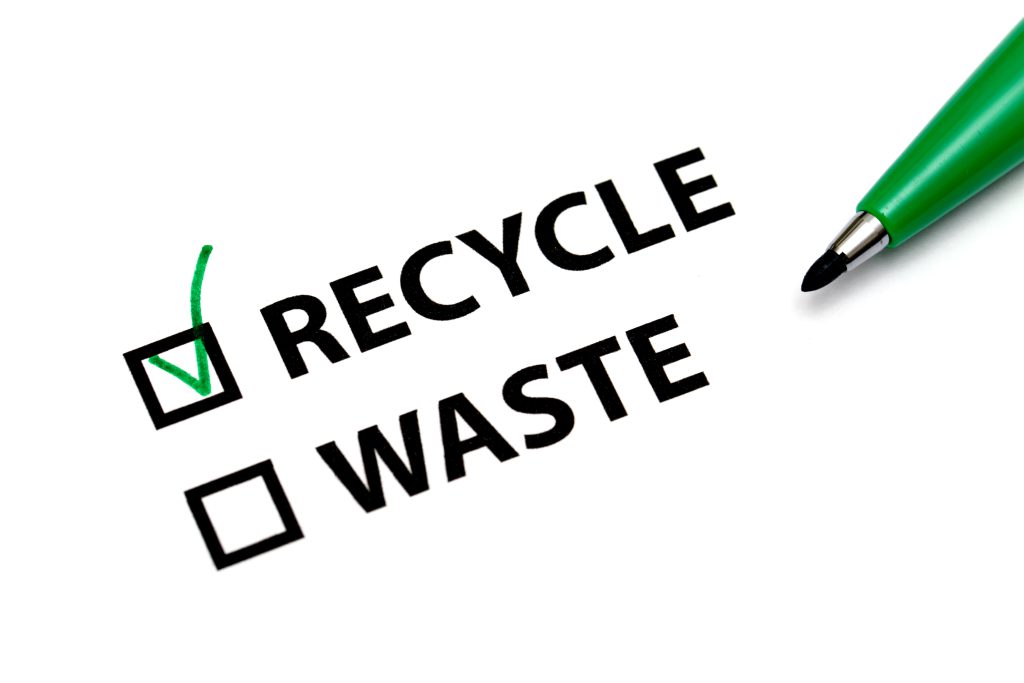Blog
WHEN YOU HEAR RECYCLED FABRICS, WHAT’S THE FIRST THING
THAT COMES INTO YOUR HEAD?
THAT COMES INTO YOUR HEAD?

By Lora O’Brien
What do you think when you hear the word recycled? For me, when I hear the word recycled, I think of old things being morphed into something new. I think of people caring enough for our planet to repurpose it instead of throwing stuff in the trash. I think of the fact we’re extending the life of something past what it was intended for, and what a beautiful thing that is to do.
When it comes to fashion, recycling fabrics are a perfect way to eliminate clothing headed to the landfill, it’s a brilliant way to reimage existing textiles, eliminating the need for more, while also encouraging a closed-loop cycle regarding our clothing. This can be an innovative way to reuse discarded plastic, turning it into sustainable textiles.
Is this the future of fashion?
WHAT ARE RECYCLED FABRICS, AND ARE THEY SUSTAINABLE?
As a designer, you’ll likely be mindful of the textiles you use and you may well be asking: what are recycled fabrics, and are they really sustainable?
Recycled textiles can be sourced from various places. This could be old clothing, leftover fabric or from deadstock textiles. Brands such as FABSCRAP are truly helping to empower the recycling movement. They work with over 600 brands to recycle and redistribute clothing, helping to end waste.
Some may question the validity of recycled textiles being sustainable, but the whole ethos behind shopping more ethically is following the three Rs: reduce, reuse, and recycle! When it comes to the environment, recycling has always been regarded as a friendly practice, and recycling a garment is no less sustainable than one that has been made entirely new following an ethical protocol.
When designing your next collection, your goal it to ensure your consumer is adhering to the three Rs through your garments. This will not only guide us towards a more sustainable way of living, but it will enable a more ethical chain from designer to consumer.
Recycling textiles means we’re reducing the need to produce new raw materials, which saves energy and helps avoid adding to the pollution that takes place during processing such as dyeing, washing and even harvesting. Recycled fabrics consume less energy in order to produce a new fabric. For example, recycled polyester consumes around 33-53% less energy compared to manufacturing brand new polyester.
Clothing that does end up in landfill take hundreds of years to decompose. In the process, they release methane and CO2 gas into the atmosphere, which is far from ideal. Synthetic textiles were never designed to decompose, so these further release toxic substances into everything from our water supply and our surrounding soil.
TYPES OF RECYCLED FABRICS
When it comes to recycled fabrics and sustainable fashion, there are two main sides of the coin.
1. Recycled Fabrics
Innovative textiles can be made by transforming discarded products such as water bottles, fishing nets, and even food waste, to create recycled fabrics for fashion and upholstery.
The waste materials used are put through several different processes which can include collecting, sorting, washing, and shredding. This is then followed by processing and manufacturing, before the textiles can be used to create new clothing or other textile products, such as accessories or even homeware.
The most common type of recycled fabric is made from plastic bottles. Brands such as Repreve turn discarded bottles into recycled polyester, and many other brands have chosen to use this in place of virgin polyester in their fashion products.
Another brand turning waste into fabrics is Remeant. Taking plastic packaging that is only meant to be single-use, they transform the waste into a stylish and colourful fabric that can be used in everything from clothing and sneakers to handbags and homewares.

2. Recycled Clothing
This process can be lengthy, but it is a beneficial way to end clothing going to landfill. The clothing is first sorted into different types of fabric type. For example, synthetic clothing will be sorted from natural materials, and then the clothing is further sorted by colour. This process alone can be lengthy and also pricey.
Now that the textiles have been sorted, the clothing is shredded using industrial machinery, which produces a fiber that can then be taken and transformed into a new fabric. Once cleaned, the new fabric is sometimes mixed with other fibers and then respun. After this process, it can be woven or knitted into a new clothing garment.
Popular clothing brand H&M is offering a similar service to its customers. Their in-store recycling centers, such as the one in Sweden, could help reverse the problem created by yearly billions of tons of textile waste, a number which would double by 2030 if people don’t change their consumer ways.
Not all recycled clothing is made into fabrics. While we’re used to the term upcycling, many textiles can be downcycled during this process. Some recycled textiles are used as stuffing for furniture or carpets. Polyester-based fabrics can be shredded, granulated and crafted into polyester chips. These are then taken and used to create entirely new fibers.

DIFFERENT TYPES OF RECYCLED FABRICS AND HOW TO USE THEM FOR FASHION
You may be wondering how you can use recycled fabrics, and incorporate them into your next fashion collection in terms of sustainability. There are many ways to do so, depending on the textile of choice and dependant on the product you’re going to design. For example, the fabric used for fashion will differ from the fabric that would be used for accessories and homeware.
Some popular types of recycled fabrics and how they can be used for fashion are:
Recycled cotton: this is made from cotton that would have otherwise been wasted. This includes cotton scraps, factory offcuts, or deadstock fabrics. In terms of texture, recycled cotton is similar to virgin cotton which is soft and lightweight. The fabric is both breathable and durable and easily washed. Recycled cotton can be used to make a multitude of things, from home textiles, to clothing, and even paper.
Recycled nylon: is a popular artificial fiber, and more than 8 pounds of it are produced annually in the U.S. alone. When recycled, it can be melted and moulded into new products or turned into a fiber which is used to make fabrics or rope. Part of the reason nylon is so popular is that it doesn’t absorb water and is quick drying. It also holds its shape well, making it popular with swimwear. Recycled nylon is perfect for making backpacks, luggage, and clothing such as swimwear, activewear and outdoor clothing.
Recycled wool: is considered a highly sustainable option when it comes to recycled fabrics. Aside from the obvious that it prevents wool from heading to landfill, using recycled wool saves huge amounts of water plus it avoids the need for chemicals used for dyeing. Recycled wool also reduces air, water and soil pollution. Recycled wool can be used for many garments, from clothing and accessories.
Recycled polyester: is often called rPet and is a textile made from recycled plastic bottles. Considering the vast amount of plastic that pollutes our landfills, recycling it is a great way to prevent it from landfill. Producing recycled polyester requires fewer resources than the production of entirely new fibers.

WHAT ARE THE TWO MAIN WAYS TO PRODUCE RECYCLED POLYESTER?
The first is mechanical recycling which is where the plastic is melted down to make new yarn. This process can be done several times before the fiber loses its quality.
The second is chemical recycling which involves breaking down plastic molecules before it’s reformed into yarn. This process is different as it allows the material to retain the quality of the original fiber, allowing the material to continuously be recycled which is a sustainable option in regard to fashion.
Recycled polyester can be used to make pretty much anything but is most popular with clothing garments.
If you would like to see and learn more about textiles made from industrial plastic, please click here. Alternatively, if you’d like to consult with us further about recycled fabric made from industrial waste, contact us here or send us an email to – info.remeant@gmail.com.
